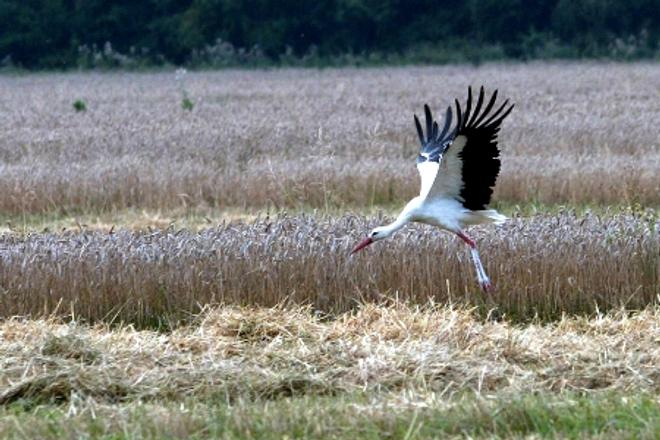THE WHITE stork called Méneš, who was marked with a tracking device within the joint Hungarian-Slovak project Vtáky bez hraníc (Birds Without Borders) on the Hungarian side of the Ipeľ river near Szécsény, was caught in Egypt on suspicions of espionage and kept in captivity for several days.
At the end of August Hungarian ornithologists received news of Méneš’ capture in Egypt, and after several days of negotiations with Egyptian authorities and ornithologists, the bird was released, Ján Gúgh of the SOS/Birdlife organisation informed the SITA newswire. Méneš’s trip started in mid August, when he also visited Slovakia near the municipality of Kováčovce, and continued through Hungary, Romania, Bulgaria, Turkey, Syria, Jordan and Israel, and after having crossed the Sinai peninsula, he flew 3,700 kilometres, all the way to the Nile valley.
“The stork, tired by a long migration, was spotted by a local fisher who caught him and became suspicious due to the transmitter on his back, which he thought to be a bomb or a spying tool,” Gúgh explained. “He handed over the stork – fortunately alive – to the army in the town of Qena, where a veterinarian determined that it was a telemetric device used for tracking the migration of birdlife.”
Thanks to the intervention of the Nature Conservation Egypt (NCE) organisation and close communication with authorities, Méneš was released after four days, in the Saluga and Ghazal protected area (islands on the Nile river near Asuan), from where he was able to join other migrating storks and continue his journey to his African winter habitat south of the Sahara. Méneš’ whereabouts can be tracked at satellitetracking.eu/inds/showmap/?check_111=111; and more information on the migration of other storks can be found at www.vtaky.sk/stranka/193-Telemetricke-sledovanie-bocianov.html or www.satellitetracking.eu.



 A white stork (source: Sme - Ján Krošlák)
A white stork (source: Sme - Ján Krošlák)